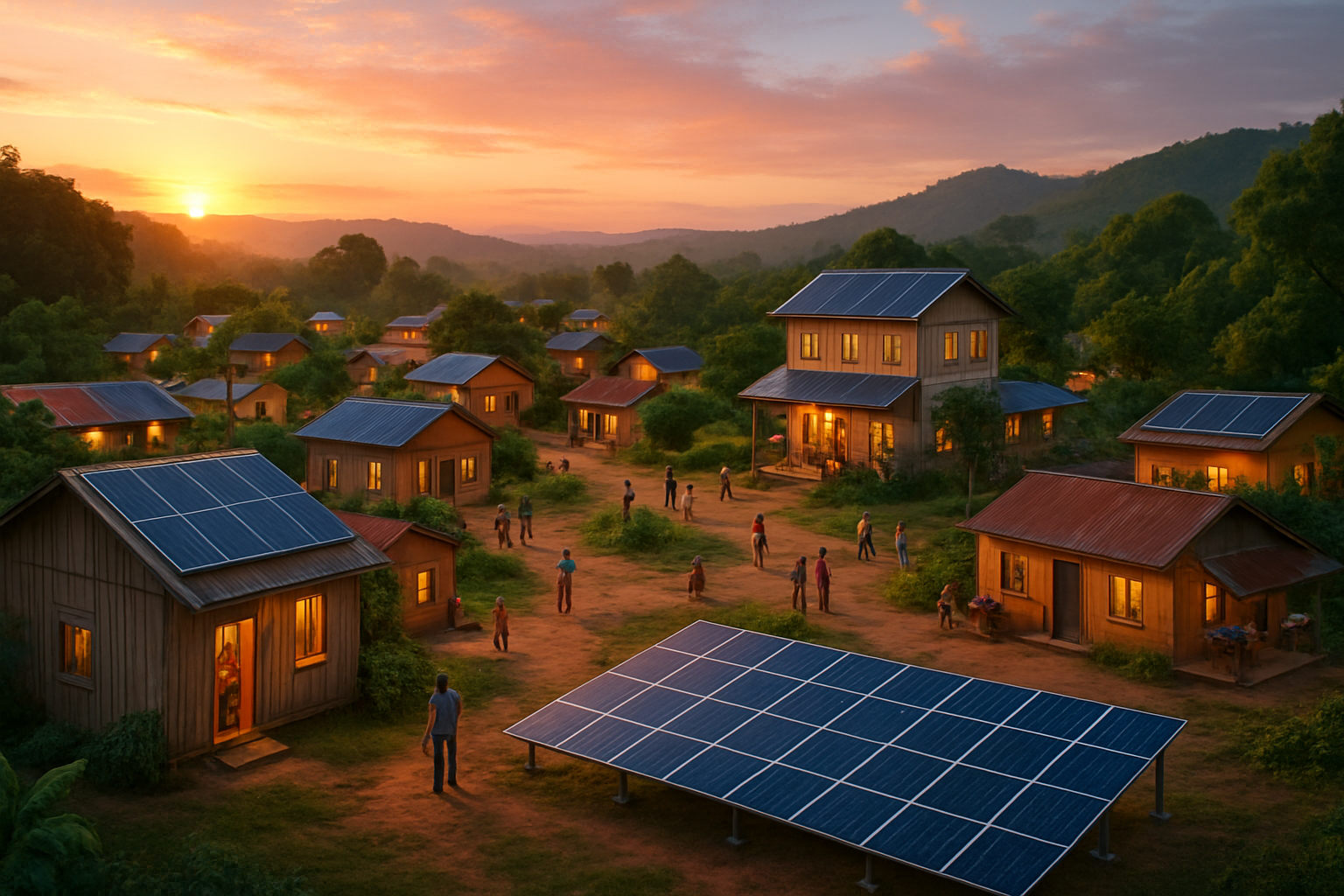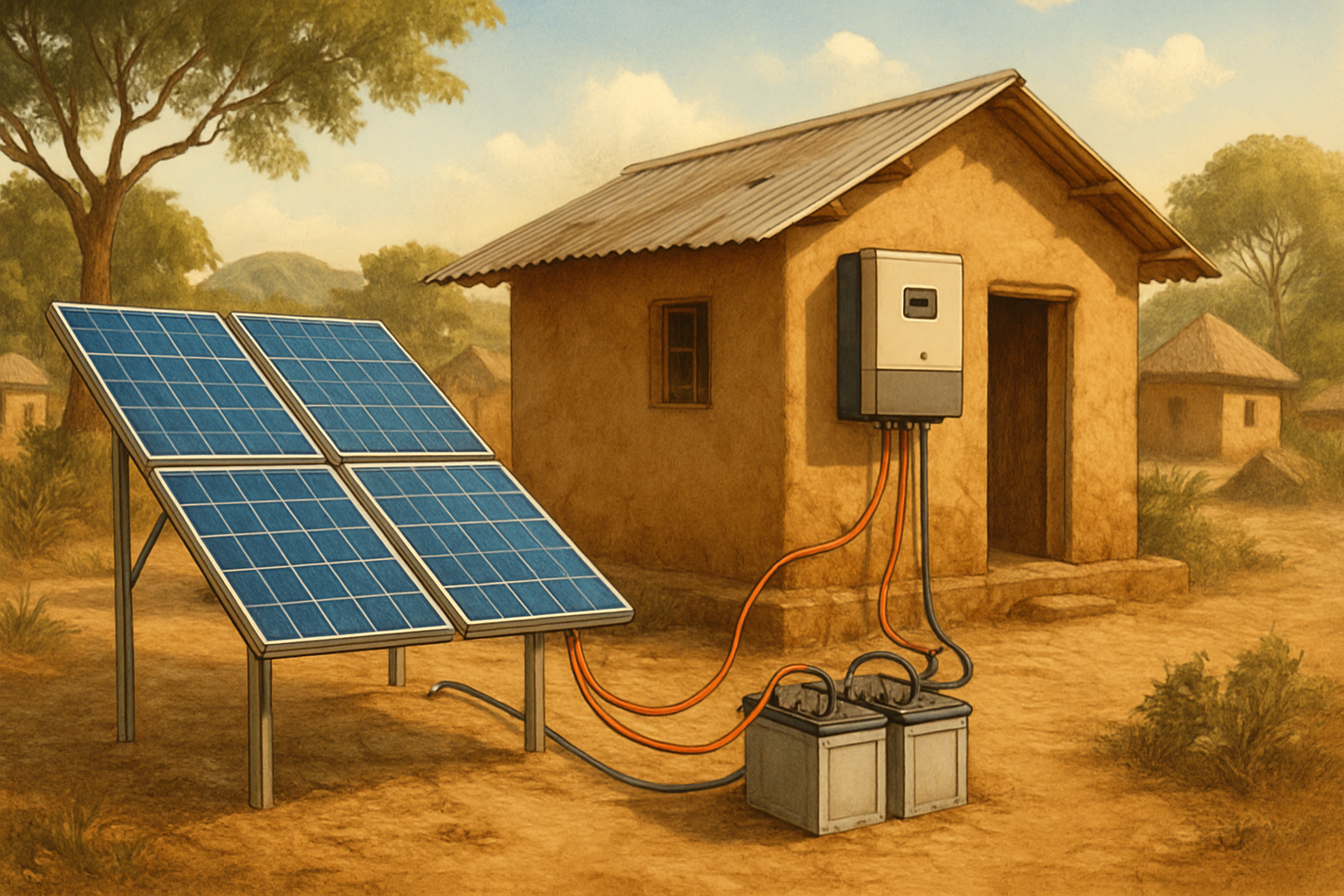Access to reliable, affordable, and sustainable energy is a fundamental human right and a cornerstone of development. Yet, millions of people, particularly in last-mile villages, still live without electricity. This lack of access hinders economic growth, limits educational opportunities, and impacts health outcomes. Decentralized solar solutions offer a powerful pathway to address this challenge, paving the way for communities to achieve energy independence and contribute to Sustainable Development Goal 7 (SDG7).

The Imperative of Energy Access for Last-Mile Villages
Defining Last-Mile Energy Poverty
Last-mile villages are often remote, rural communities situated far from national electricity grids. Extending traditional grid infrastructure to these areas is frequently cost-prohibitive and technically complex due to challenging terrain and sparse populations. Consequently, residents in these regions rely on expensive, unhealthy, and unreliable energy sources such as kerosene lamps, diesel generators, or biomass for cooking and lighting. This energy poverty perpetuates a cycle of underdevelopment.
SDG7 and Its Global Significance
Sustainable Development Goal 7 (SDG7) aims to ensure access to affordable, reliable, sustainable, and modern energy for all by 2030. Achieving this goal requires significant strides in electrifying last-mile communities. Despite progress, 666 million people still lack electricity, with 84 percent of them residing in rural areas. Sub-Saharan Africa accounts for 85 percent of the global population without electricity. The International Energy Agency (IEA) projects that more than half of the underserved population worldwide (55%) will gain access through off-grid and decentralized energy technologies. Decentralized solar PV is the most widespread technology for off-grid energy generation, offering substantial socio-economic benefits and job creation for local economies.
Decentralized Solar Solutions: A Technical Overview
Decentralized solar systems provide a robust and scalable solution for last-mile electrification. These systems generate electricity close to the point of consumption, minimizing transmission losses and infrastructure costs.
Components of an Off-Grid Solar System
A typical off-grid solar power system consists of several key components working in harmony to capture, convert, store, and distribute solar energy.
- Solar Panels: These convert sunlight into direct current (DC) electricity. Monocrystalline panels are a common choice due to their efficiency and affordability.
- Charge Controller: This device regulates the flow of electricity from the solar panels to the battery bank, preventing overcharging and deep discharging, which can damage batteries.
- Battery Bank: Batteries store excess solar energy for use during periods without sunlight, such as at night or on cloudy days. Lithium Iron Phosphate (LiFePO4) batteries offer high performance, safety, and reliability, making them an excellent choice for demanding off-grid applications.
- Solar Inverter: An inverter converts the DC power stored in the battery bank into alternating current (AC) electricity, which powers most household appliances and electronics. Hybrid inverters can integrate solar, battery, and potentially a backup generator for enhanced reliability.
Advantages of Decentralized Systems
Decentralized solar systems offer specific advantages for remote communities:
- Energy Independence: Communities generate their own power, reducing reliance on external sources and vulnerability to grid outages.
- Rapid Deployment: These systems can be installed relatively quickly compared to extending traditional grid infrastructure.
- Scalability: Systems can start small and expand as energy needs and financial resources grow.
- Reduced Transmission Losses: Generating electricity locally significantly reduces energy lost during transmission over long distances, which can be between 5% and 8% in centralized systems.
- Environmental Benefits: Solar power is a clean, renewable energy source, reducing greenhouse gas emissions and contributing to climate change mitigation.
System Design Considerations
Effective system design is crucial for the long-term success of off-grid solar solutions. This involves a comprehensive load assessment to determine the community's energy needs, careful sizing of solar panels and battery banks, and strategic site selection to maximize solar exposure. Factors like peak demand, daily energy consumption, and desired autonomy (how long the system can run without sunlight) inform these decisions.
Building a Roadmap: Implementation Strategies
A successful roadmap to SDG7 for last-mile villages requires a multi-faceted approach that extends beyond just technology.
Community Engagement and Needs Assessment
Engaging local communities from the outset is vital. Understanding their specific energy needs, priorities, and cultural contexts ensures that the solar solution is appropriate and adopted. This collaborative approach fosters ownership and increases the likelihood of long-term success. Local input can inform the design of systems that power homes, schools, clinics, and small businesses, directly addressing community development goals.
Financing Models and Sustainability
Initial investment costs can be a barrier for remote communities. Innovative financing mechanisms are essential to make decentralized solar accessible. These can include:
- Grants and Subsidies: Providing initial capital to kickstart projects.
- Pay-As-You-Go (PAYG) Models: Allowing users to pay for energy services in small, affordable increments, similar to mobile phone top-ups.
- Community Ownership Models: Empowering communities to collectively own and manage their energy assets.
Ensuring financial sustainability also involves establishing appropriate tariffs and revenue collection mechanisms that cover operational and maintenance costs.
Operation, Maintenance, and Local Capacity Building
Long-term viability depends on robust operation and maintenance (O&M) strategies. Training local technicians to install, maintain, and repair solar systems creates local jobs and ensures prompt resolution of technical issues. This capacity building strengthens local economies and fosters self-reliance.
Overcoming Challenges and Ensuring Resilience
While decentralized solar offers immense promise, addressing potential challenges is key to building resilient and reliable energy systems.
Technical Hurdles and Quality Standards
Challenges can include limited technical expertise in remote areas, difficulties in transporting equipment, and managing seasonal variations in solar power production. Adhering to high-quality standards for all components, from solar panels to batteries, is paramount. Utilizing durable and reliable products, such as high-performance LiFePO4 batteries and integrated energy storage systems, enhances system longevity and reduces maintenance needs. Robust off-grid solar solutions, designed for harsh environments, offer consistent power.
Cybersecurity for Remote Microgrids
As distributed energy resources (DERs) become more prevalent, cybersecurity emerges as a critical concern, even for remote microgrids. These systems rely on digital communication and control, which can present risks from cyberattacks. Protecting the integrated DER and critical power grid infrastructure from malicious cyberattacks is vital to ensure secure integration without harming grid reliability and stability. Implementing secure communication protocols and robust cybersecurity measures from the design phase is essential to protect these systems.
The Role of Smart Inverters
Smart inverters are a crucial technology for integrating solar energy and other DERs into the electric grid, even in off-grid contexts. They offer advanced functionalities beyond basic DC-to-AC conversion, providing grid support functions like voltage regulation and frequency support. These intelligent devices enhance energy efficiency by optimizing energy consumption and maximizing energy production through intelligent algorithms. Smart inverters contribute to the reliability and stability of decentralized solar systems, adapting to varying conditions and protecting sensitive components. This technology is vital for building resilient and efficient off-grid solar solutions.
Empowering Futures with Solar Energy
Decentralized solar energy offers a transformative path for last-mile villages to achieve SDG7. By providing reliable, affordable, and sustainable electricity, these solutions unlock opportunities for economic growth, improved health, and enhanced education. The strategic deployment of robust off-grid solar systems, supported by community engagement, innovative financing, local capacity building, and advanced technologies like LiFePO4 batteries and smart inverters, can truly empower remote communities and foster a future of energy independence.
FAQ Module
What is Sustainable Development Goal 7 (SDG7)?
SDG7 is one of the United Nations' Sustainable Development Goals, aiming to ensure access to affordable, reliable, sustainable, and modern energy for all by 2030. This includes increasing the share of renewable energy and improving energy efficiency.
Why is decentralized solar suitable for last-mile villages?
Decentralized solar is ideal for last-mile villages because it eliminates the need for expensive and complex grid extensions. It offers rapid deployment, scalability, reduced transmission losses, and provides energy independence using a clean, renewable resource.
What are the key components of an off-grid solar system?
The main components include solar panels to convert sunlight into electricity, a charge controller to manage power flow, a battery bank (such as LiFePO4 batteries) to store energy, and a solar inverter to convert stored DC power into usable AC power for appliances.
How can communities ensure the long-term success of these systems?
Long-term success relies on strong community engagement, sustainable financing models, and robust operation and maintenance plans. Training local technicians for system upkeep and repairs is crucial for ensuring the system remains functional and beneficial for years.





Leave a comment
All comments are moderated before being published.
This site is protected by hCaptcha and the hCaptcha Privacy Policy and Terms of Service apply.